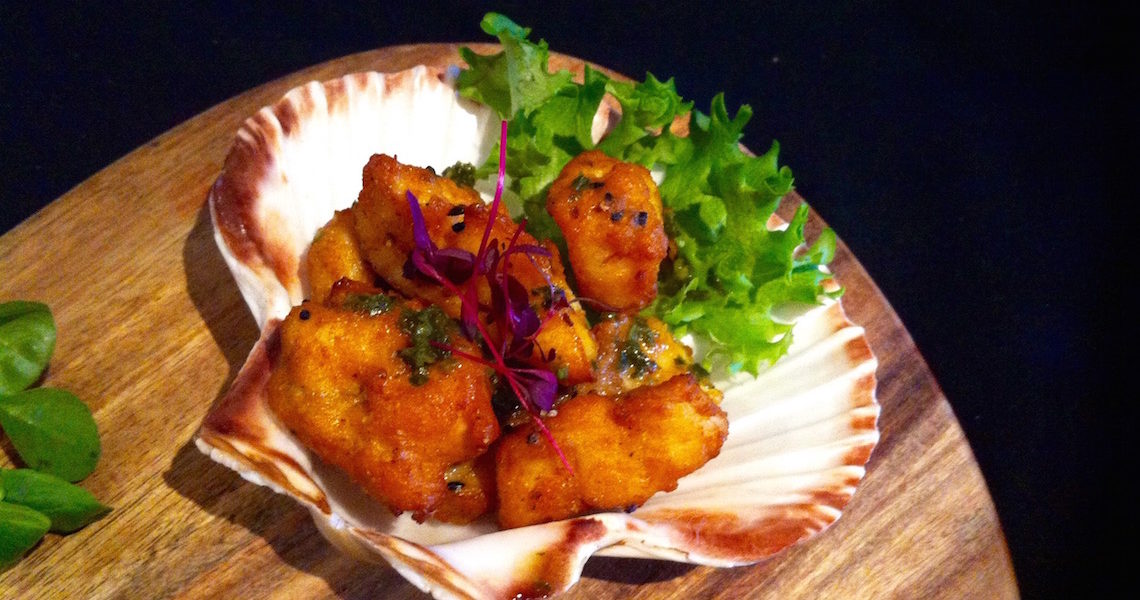When I was invited along to East India Café’s Indian cookery masterclass afternoon, I couldn’t believe my luck. It sounded to me like a perfect Sunday afternoon – eating, chatting and learning new recipes.
East India Café sits on The Promenade in Cheltenham. It’s not your usual Indian curry house; it serves Anglo-Indian food with cuisine harking back to the days of the Raj. Being an Indian Summers fan, and having enjoyed the trials and tribulations of Ralphie, Cynthia, Afrin et al, I was keen to understand more about the food of the times.
East India Café runs these Indian cookery masterclass demonstrations every last Sunday of the month with groups of up to eight people. Themes vary and ours was to focus on Indian street food. Each of the five dishes we were going to be shown would be from a different region of the Indian sub-continent.
Steps take you down into the cosy café. We sat down on sofas in the entrance to introduce ourselves and enjoy a welcome drink or ‘shorbot’. The café’s décor reflects the colonial era with British touches including Union Jack cushions.
The shorbots were mixed for the British Raj for medicinal purposes, as well as pleasure. They were said to help one acclimatize to India’s unpredictable seasons. Ours contained psyllium husks (soaked overnight and used to aid digestion), lemon juice, rose syrup, rose liqueur and basil seeds. Certainly tasty and even better if it has health benefits too.
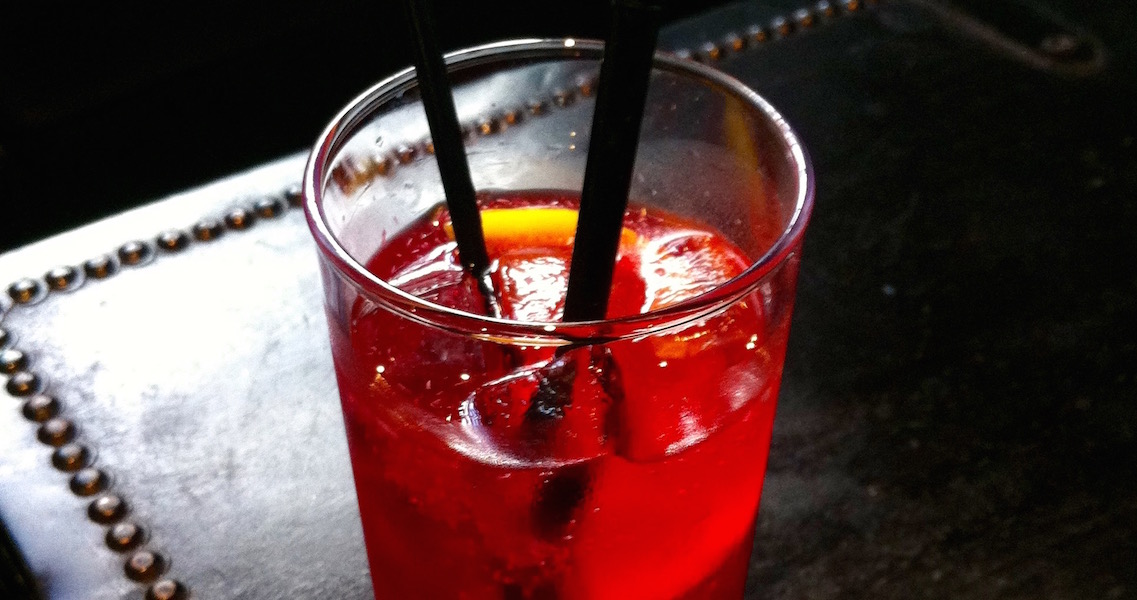
We were seated at two long tables facing the demonstration table. Chefs Rasel and Litu introduced themselves to us. “I love food, it may not look like it, but I eat a lot,” said development chef Rasel.
Litu, the chef patron, explained that street food dishes are usually traditionally fried. But he said the dishes they would be demonstrating today had been modified to enjoy eating in a more healthy way. First on the list to try was Aam Panna, a mango drink. “I remember buying this from street vendors on my way home from school,” said Litu.
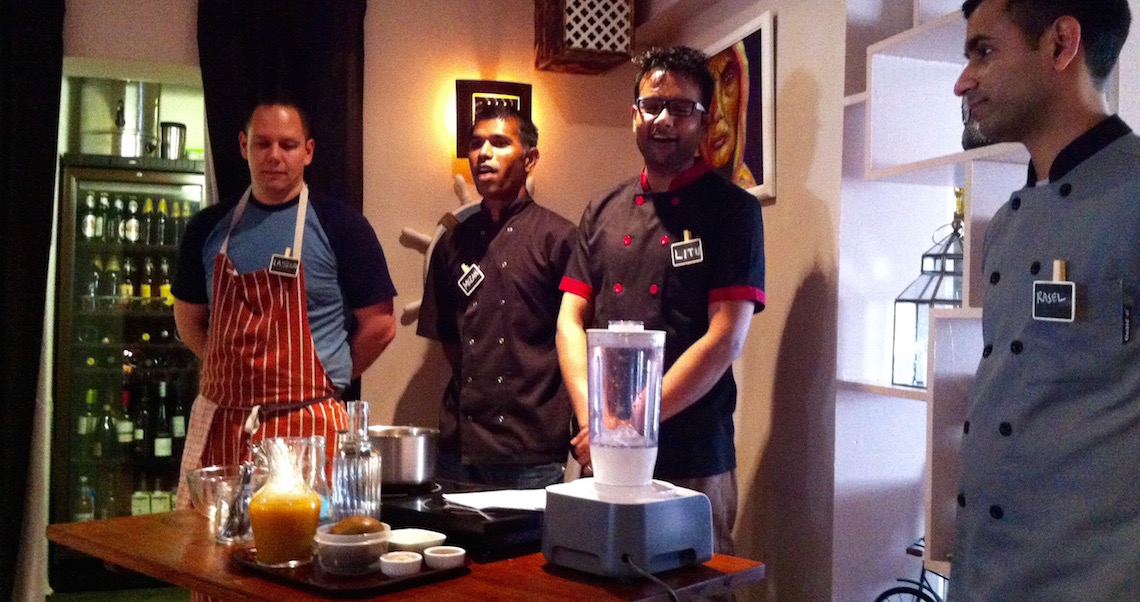
We were split into two groups and given a tray of rosemary, mint, sliced mango, kaffir lime and pomegranate seeds. We also had to pick an appropriate cup or glass. Our job was to figure out the best way to present the drink and garnish it. Sure enough, our competitive streaks came out as we rose to the challenge.
Originating from Dhaka, the Aam Panna was thick and fragrant with mango and just a hint of curry spice. One of the special ingredients was black salt. Litu explained this is one of the most flavourful salts, used to season rather than cook with.
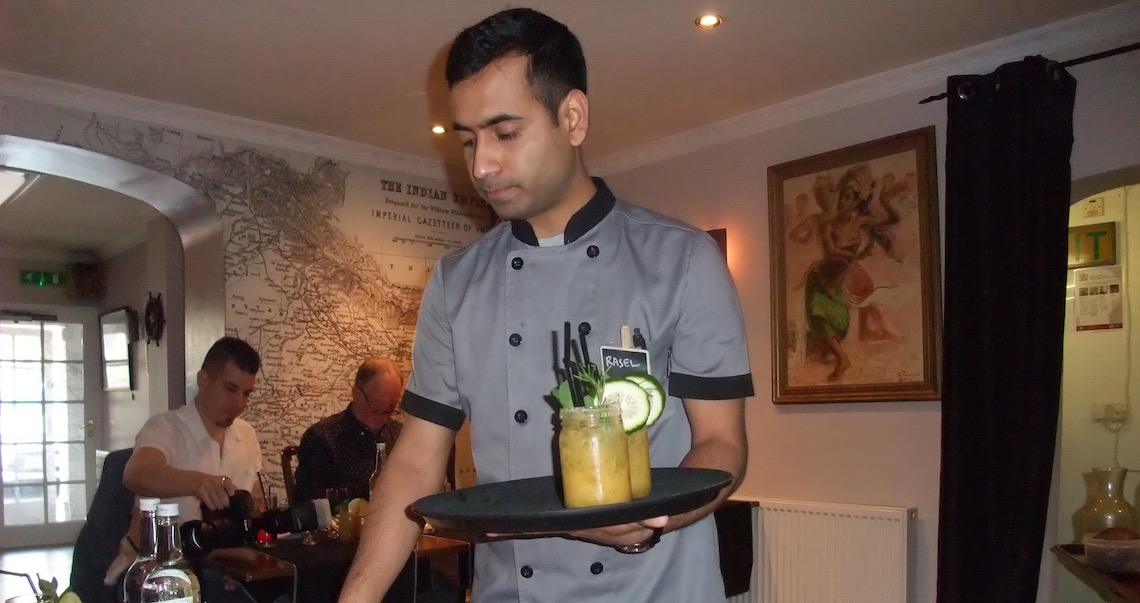
Feeling a bit peckish, I was keen for our first course to get underway. Litu asked for a volunteer and I was more than happy to oblige and took my place at the demo table. We were going to make Samosa Chaat – a deconstructed samosa of masala chickpeas, new potatoes and kafir lime.
This dish originally hails from Kolkatta, which Litu explained is a particularly good region for street food due to high unemployment and the consequent entrepreneurialism. Samosa Chaat, he said, is a healthy lunchbox snack and not only this, but it should also mitigate the afternoon office-desk slump.
With a range of little dishes in front of me, it was my job to decide how much of each ingredient I should add to my hot pan. Luckily Rasel was on hand for a bit of guidance. I sautéed bay leaves, coriander seeds and black mustard seeds until they were fragrant. To this I added onions and chickpeas, then turmeric, Kashmiri chili powder and salt. Then finally the addition of potatoes and lime leaves. It smelt amazing and the chilli was tingling my nose, but my work for now was done.
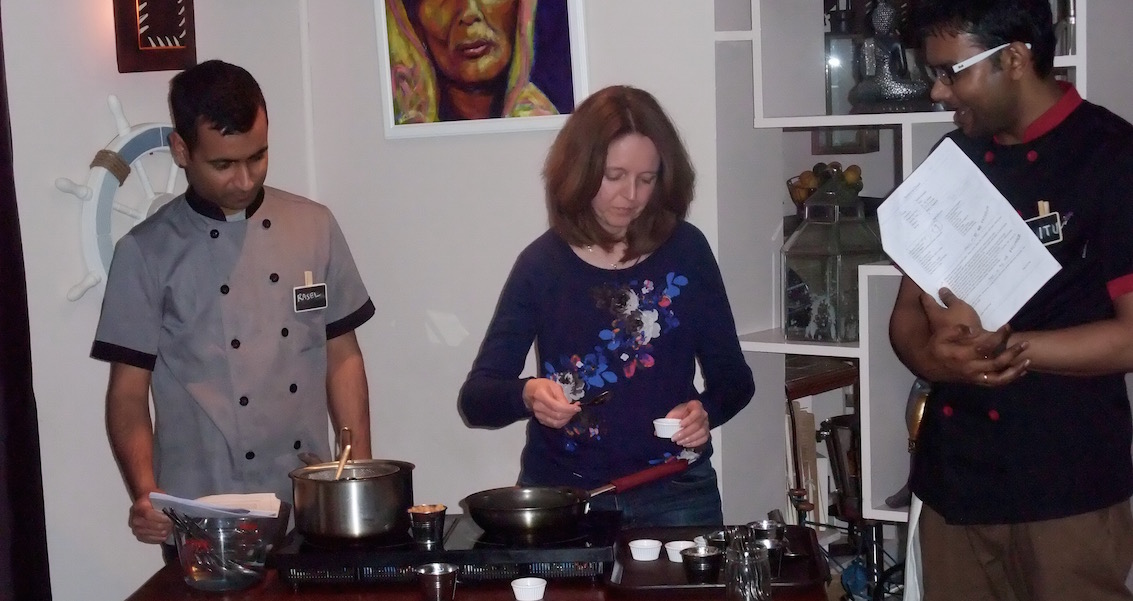
Litu advised us all to swap the chilli powder in our kitchen cupboards to Kashmiri chilli. He said, “This red chilli is from Kashmir, a cool region. So the chilli is not very hot, but has a beautiful colour.”
To my cooked mixture, the chef added a mix of chopped cucumber, tomatoes, onions, chilli and coriander; chopped, baked samosa skins; a mix of yoghurt, mint sauce and English mustard, and finally, a tablespoon of East India Café’s Chaat Masala spice blend.
Our teams were once again back in action to work out how to present our deconstructed samosas, before we were finally served a dish of our very own to eat. The results were truly delicious and I resolved to pep up my lunchbox contents from now on.
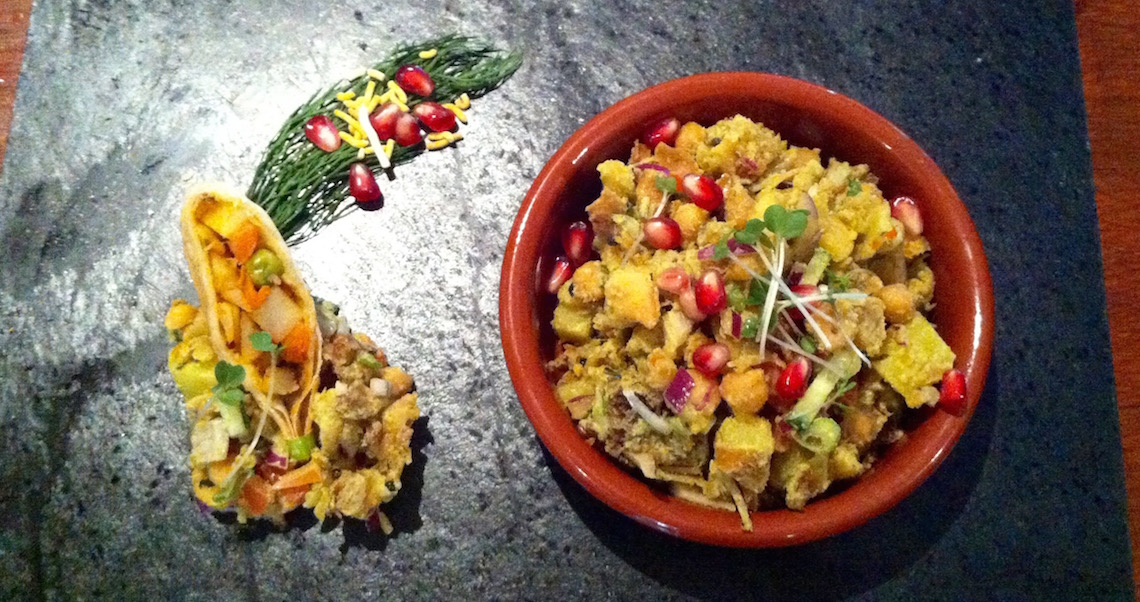
The next dish on the menu was Amritsari Fish, a popular street food from Amritsar. The chef used a mix of seabass (for its meatiness) and haddock (for its saltiness) for marinating in lemon juice with chilli powder, carom seeds, nigella seeds, mustard oil and turmeric. Litu explained the lemon juice helps tenderise the fish. The resulting mixture was coated in batter, made from gram flour and corn flour, then fried until golden.
Adding an Italian twist to the fish, was a gremolata made with coriander, parsley, garlic, lemon and olive oil. The dish was served to us inside a scallop shell on top of wooden boards. The fish was tender and lightly spiced with a crispy coating and was complemented perfectly by the gremolata and a little tartar sauce.
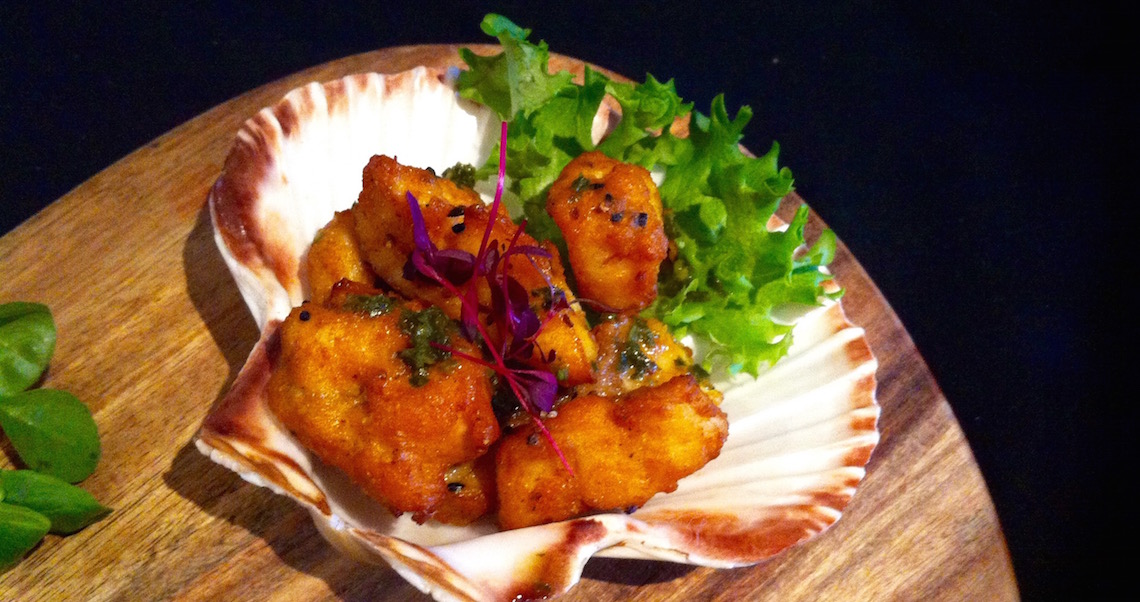
The final savoury dish of the day was Chicken 65, originating from Madras and sold on the streets of Chennai. Cubed chicken was marinated in lemon juice, Greek yoghurt, ginger and garlic paste. This was then fried until golden in a batter made with sparkling water, gram and corn flours, garam masala, paprika, nigella seeds and chilli powder.
Our job as a team was to mix our own Indian Aioli, by working out the balance of mayonnaise, garlic, lemon juice, cumin, black salt and rock salt.
When we were served our dishes, the crispy chicken looked beautiful on the plate. It was subtly flavoured and melted in the mouth.
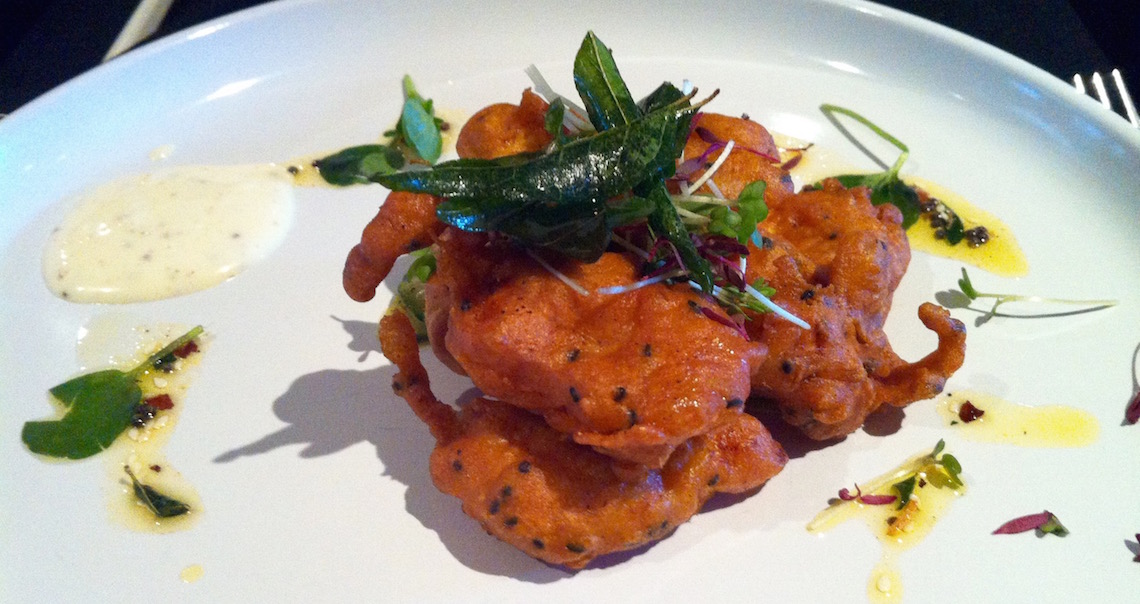
All our hard work was done, all we had left to do was sit back and enjoy dessert. Gulab Jamuns is made from milk solids and is a popular street snack across South Asia. I was unsure what it would taste like, but it reminded me of a dense, incredibly syrupy sponge. It was served in a pretty glass dish, which would have looked very elegant on the Viceroy’s table. The accompanying kulfi lolly was delightful and delicately flavoured with rose water and pistachio.
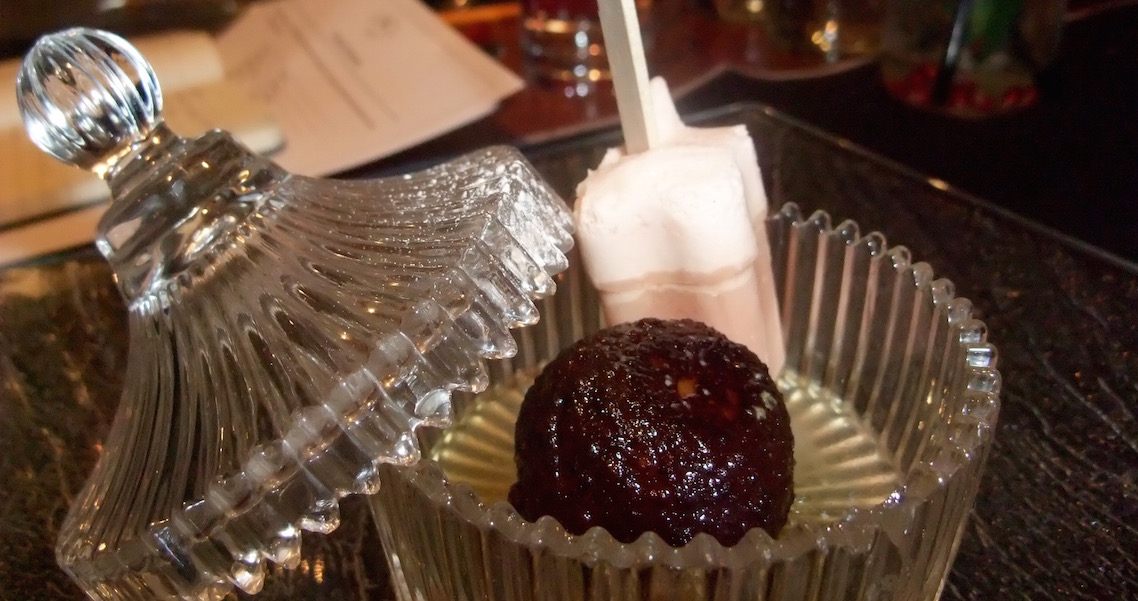
Time had overrun, probably because of all the questions we were asking. We were given our recipe sheets and a little pack of East India Café’s garam masala to take home. I left the restaurant feeling full, inspired and eager to put my new recipes into practice. Also thinking that I must book at table at East India Café to experience the other delights on their menu.
I found East India Café’s Indian cookery masterclass is a great way to enjoy some hands-on cookery, learn some insider tips, meet some new people and eat some really tasty food.
Thank you to East India Cafe for kindly hosting my visit. All views and opinions are my own.

